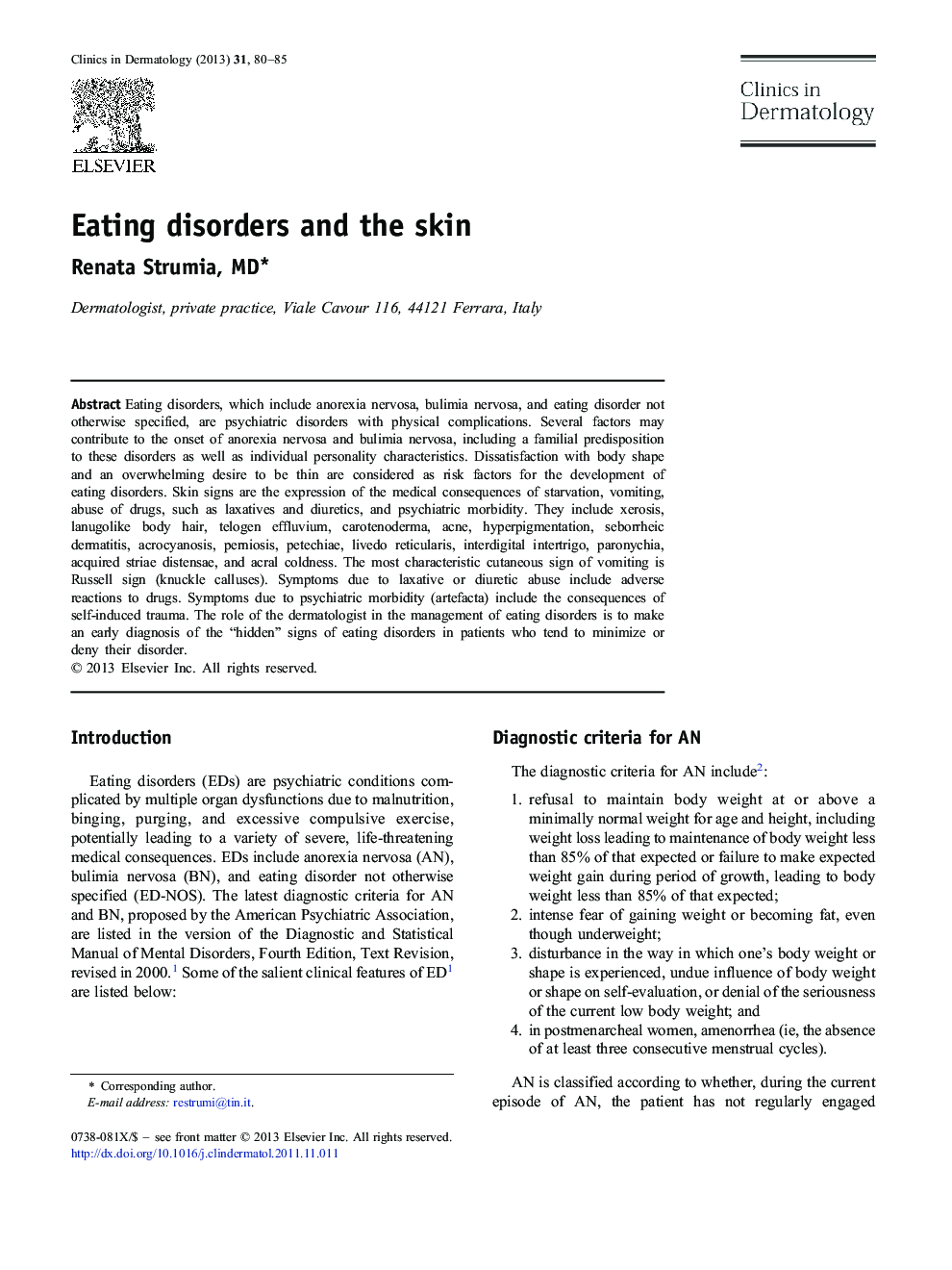| Article ID | Journal | Published Year | Pages | File Type |
|---|---|---|---|---|
| 3194497 | Clinics in Dermatology | 2013 | 6 Pages |
Eating disorders, which include anorexia nervosa, bulimia nervosa, and eating disorder not otherwise specified, are psychiatric disorders with physical complications. Several factors may contribute to the onset of anorexia nervosa and bulimia nervosa, including a familial predisposition to these disorders as well as individual personality characteristics. Dissatisfaction with body shape and an overwhelming desire to be thin are considered as risk factors for the development of eating disorders. Skin signs are the expression of the medical consequences of starvation, vomiting, abuse of drugs, such as laxatives and diuretics, and psychiatric morbidity. They include xerosis, lanugolike body hair, telogen effluvium, carotenoderma, acne, hyperpigmentation, seborrheic dermatitis, acrocyanosis, perniosis, petechiae, livedo reticularis, interdigital intertrigo, paronychia, acquired striae distensae, and acral coldness. The most characteristic cutaneous sign of vomiting is Russell sign (knuckle calluses). Symptoms due to laxative or diuretic abuse include adverse reactions to drugs. Symptoms due to psychiatric morbidity (artefacta) include the consequences of self-induced trauma. The role of the dermatologist in the management of eating disorders is to make an early diagnosis of the “hidden” signs of eating disorders in patients who tend to minimize or deny their disorder.
